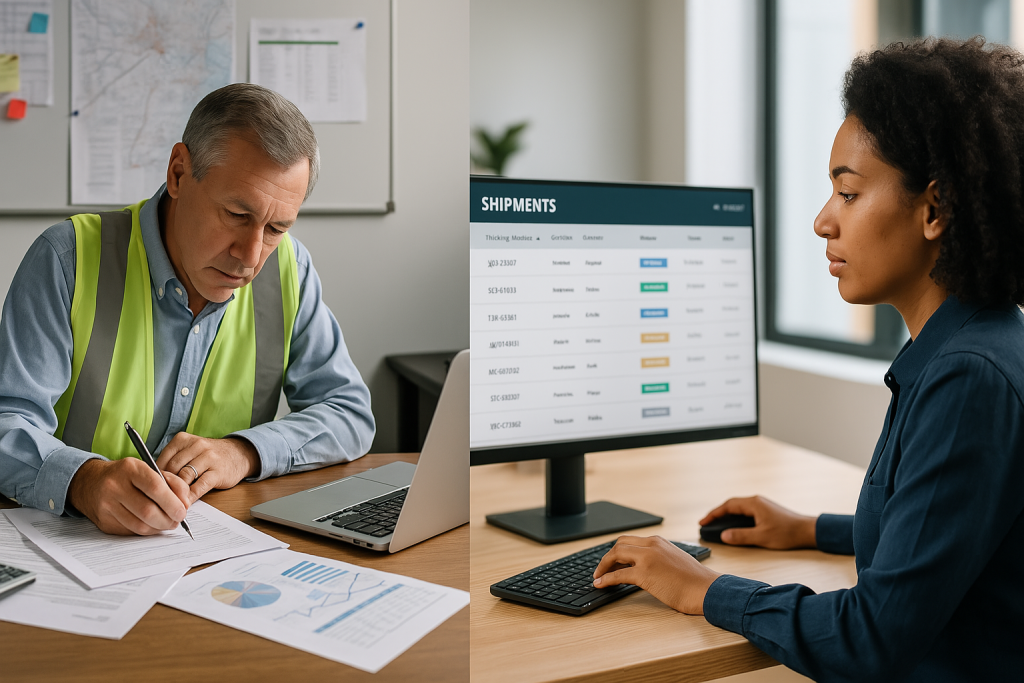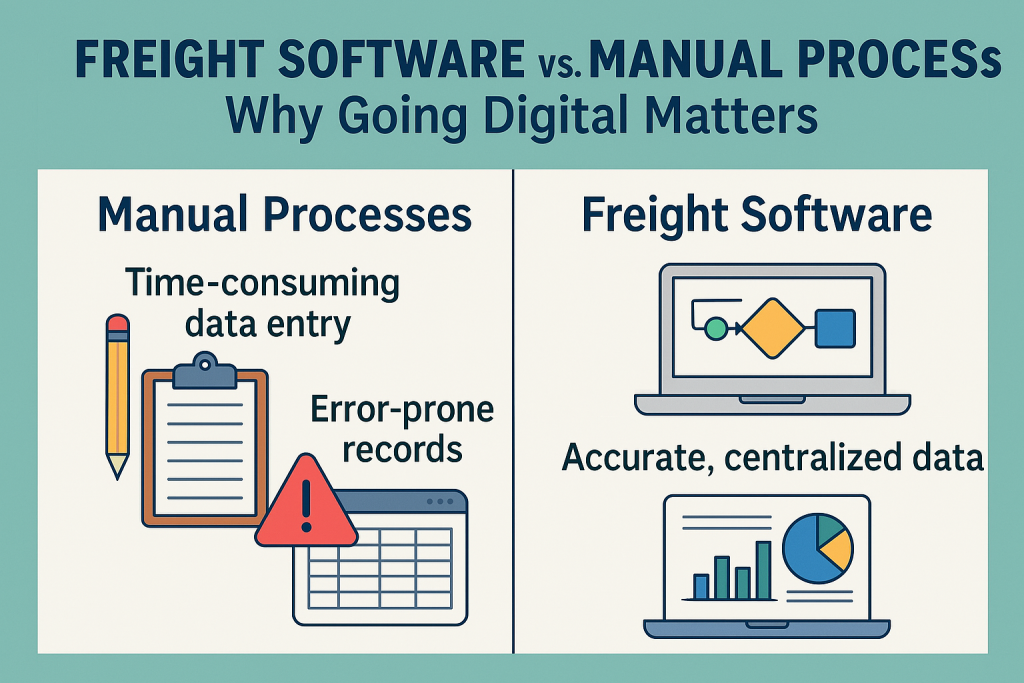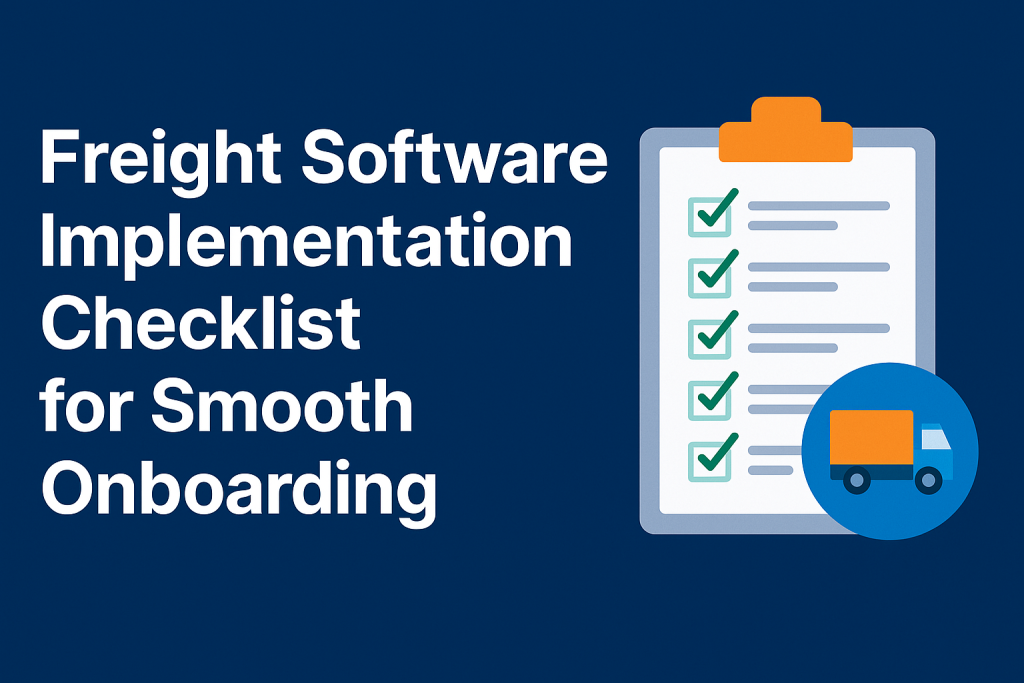Freight Software vs. Manual Processes: Why Going Digital Matters

1. 🕒 Time Efficiency: Repetition vs. Automation
Manual freight operations are filled with repetitive tasks — copying data between systems, manually preparing quotes, printing paperwork, emailing updates, and correcting small errors. These inefficiencies don’t just eat up hours; they drain team energy.
✅ Freight software automates these steps. From quoting and booking to document generation and client notifications, digital tools eliminate bottlenecks. What used to take hours can now take minutes — giving your team more time to focus on customer service, sales, and growth strategies.
2. 📑 Document Management: Prone to Errors vs. Built-in Accuracy
In a manual setup, documents like Bills of Lading, packing lists, or commercial invoices are usually prepared in Word or Excel. It’s easy to miss a field, use an old template, or misplace a file. A small mistake can cause customs delays or client frustration.
✅ Freight software ensures accuracy by pulling shipment data into pre-configured templates. It also keeps all documents stored in one place, easily searchable, and always up-to-date. You minimize human error and maximize compliance — without needing to double-check every detail.

3. 📍 Shipment Tracking: Delayed Updates vs. Real-Time Visibility
With manual methods, tracking cargo often involves checking third-party portals, emailing carriers, or waiting on updates. This slows down communication and leaves clients in the dark.
✅ Freight software provides integrated, real-time tracking for sea, air, and land shipments. Clients can log into their own portal to check status updates, while your team receives instant alerts on delays, milestones, or delivery confirmations. The result? Better visibility, faster action, and fewer “where’s my cargo?” emails.
4. 📈 Scalability: Resource Strain vs. Sustainable Growth
Manual processes may work when handling 10 or 20 shipments a month — but as you grow, so do the issues. More volume means more data entry, more errors, and more team stress. Scaling this way usually requires hiring more staff, which increases costs.
✅ With digital freight software, your operations scale without needing to add headcount. Automation, templates, and smart workflows allow one person to manage hundreds of shipments efficiently. That’s how growing logistics companies stay lean and competitive.
5. 🤝 Team & Client Collaboration: Disconnected vs. Connected
Manual workflows rely heavily on scattered emails, phone calls, and shared folders that often get messy or outdated. Teams work in silos and clients feel left out of the loop.
✅ Freight software brings everyone onto one platform. Internal teams collaborate in real time, and clients access branded portals to view documents, track shipments, or chat with your team. This transparency builds trust, speeds up decisions, and reduces confusion.

6. 📊 Reporting & Visibility: Guessing vs. Real-Time Insights
If you’re using spreadsheets, getting a full picture of your operation is slow and painful. You might be tracking data, but you’re not learning from it.
✅ Freight platforms provide instant analytics: shipment timelines, cost breakdowns, carrier performance, and customer activity. These dashboards help you improve service, identify inefficiencies, and make strategic decisions backed by data — not gut instinct.

7. 🔐 Security & Compliance: At Risk vs. Protected
Excel files on desktops, printed documents, and emails without encryption create major vulnerabilities. Losing data, facing a breach, or failing an audit can be costly.
✅ Modern freight software includes cloud storage, encrypted access, automatic backups, and permission controls. You stay compliant with data regulations like GDPR and ensure your business is always protected — no matter where your team works from.
💡 Final Verdict: Why Going Digital Matters
Manual processes might feel comfortable, but they hold your business back. They slow you down, introduce risk, and make it hard to grow. Freight software, on the other hand, delivers automation, control, insight, and scalability — all essential in today’s logistics industry.
🚀 Platforms like Linbis are built to replace manual headaches with smooth, digital workflows — designed specifically for freight forwarders.
🔗 Ready to make the switch? Explore how digital freight software can transform your operation at Linbis.com
